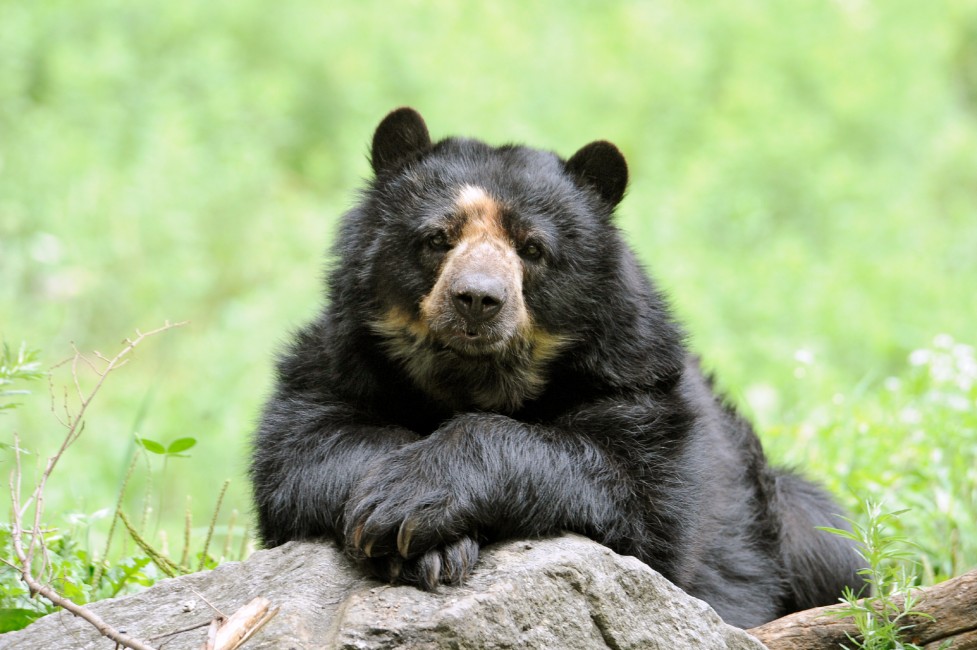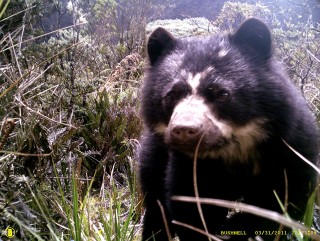
July 1, 2015
A Vulnerable Bear
- as seen by -
 Scott Silver
Scott Silver
On the forested slopes of the Andes mountain range, lives the only bear species in South America. The Andean bear (Tremarctos ornatus), is also called the spectacled bear due to their cream-colored facial markings that oft-times resemble eyeglasses. Like their personalities, these markings are distinct for each bear, making it easy for researchers to identify individuals.
Seeing Andean bears in the wild is no easy feat. High altitudes, dense forests, and difficult terrain make it challenging to find them in their native habitats. Andean bears primarily find refuge in the high altitude lands from which they get their name, often at 5-8,000 feet above sea level, and sometimes as high as 15,000 feet above sea level. They like to build nests in the trees of these forests that get their moisture from cloudy mists rather than precipitation.
Andean bears are becoming more and more vulnerable as they lose their forest homes to agriculture. The Wildlife Conservation Society has been working to save Andean bears in the wild since 1976. Anyone who has worked these bears either in the field or in zoos has a true appreciation for them, and hence, a true appreciation for what is lost when they disappear.
Fewer than 50 Andean bears live in zoos across the United States, but millions of lucky visitors get to see them there. Two Andean bears reside at WCS’s Queens Zoo along with the more than 75 other species of animals from the Americas.
Adapted from Live Science Expert Voices.
Nikon D4




Leave a Comment
Handbook_2022
March 17, 2022 at 1:20 am
“Even though some people have claimed that panda populations are on the rise, we still consider them Endangered because too much uncertainty exists to justify changing their status to Vulnerable. It would be unwise to assume that in less than 10 years under the new habitat improvement policies in China that panda populations could have dramatically increased